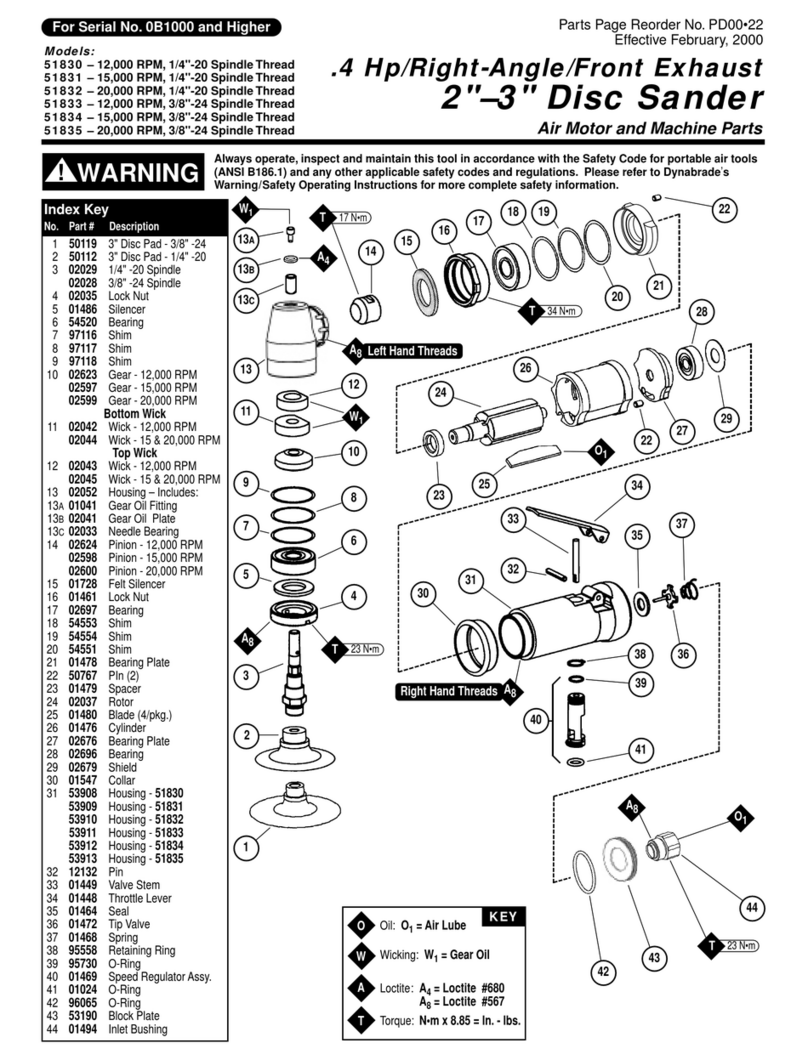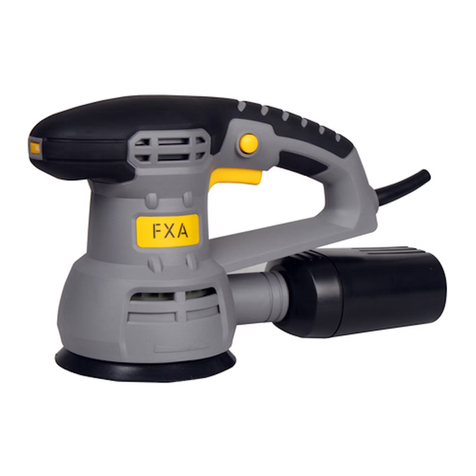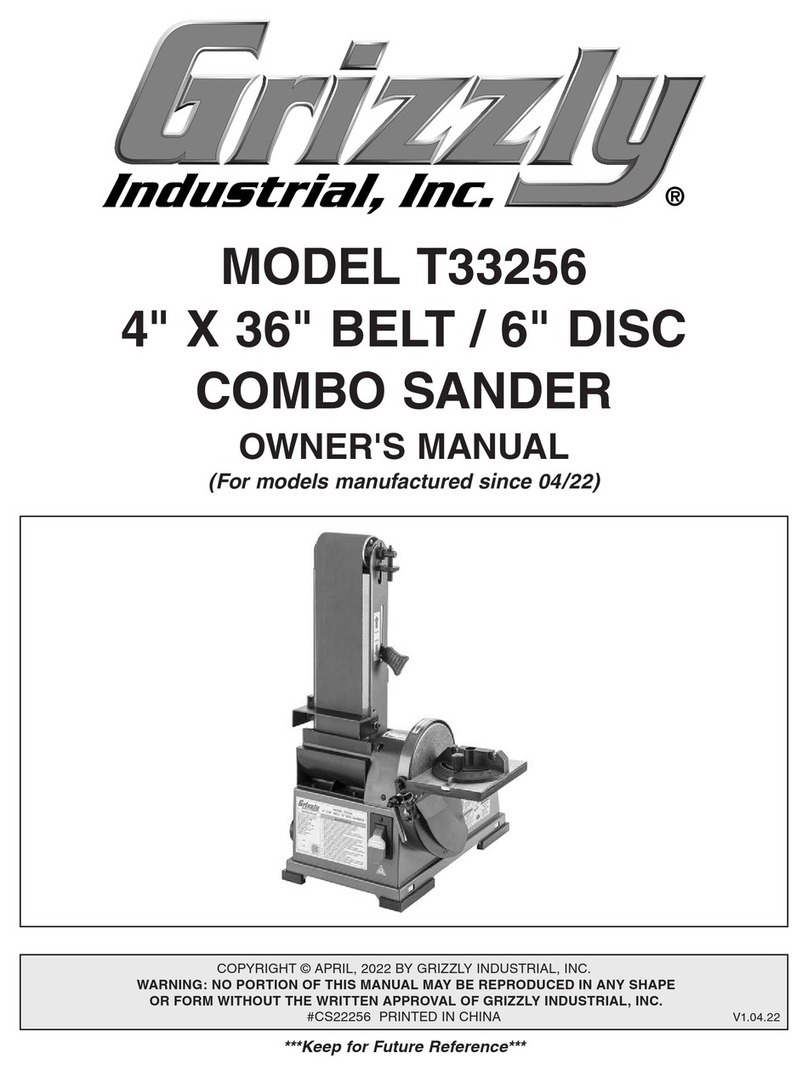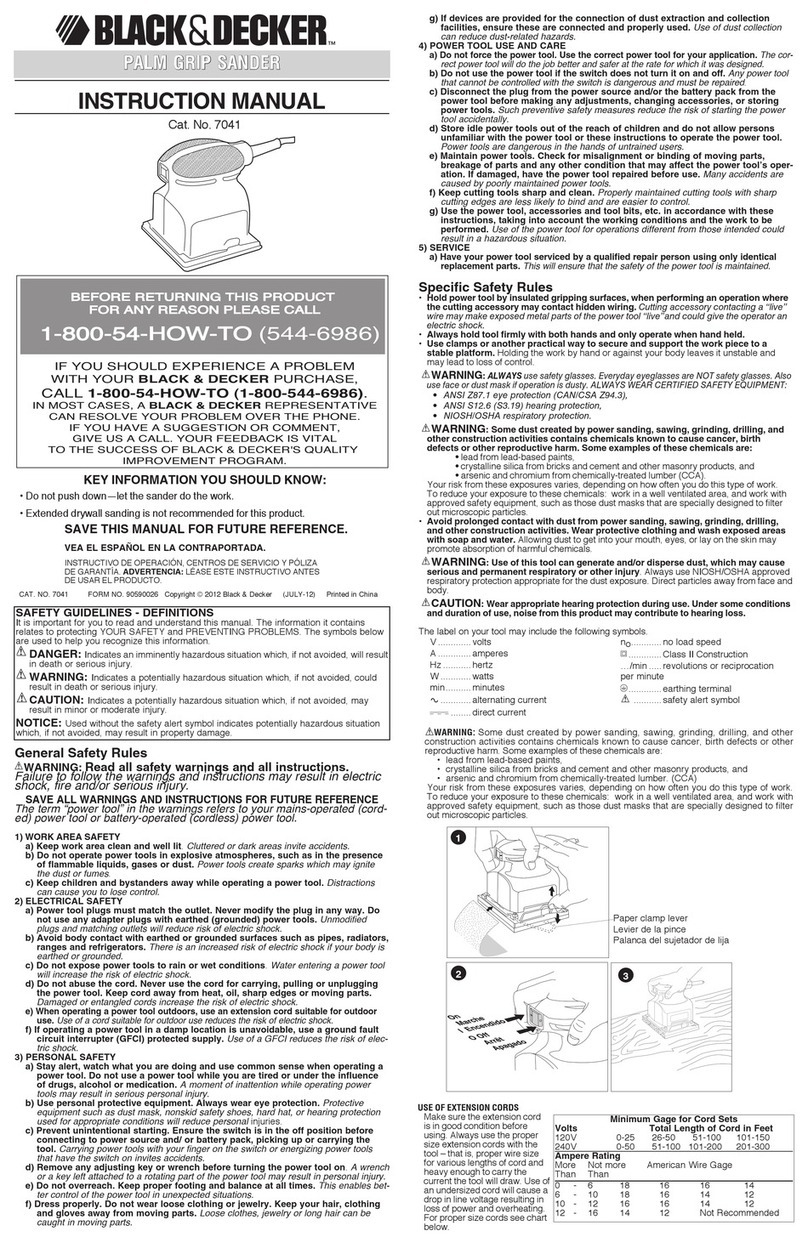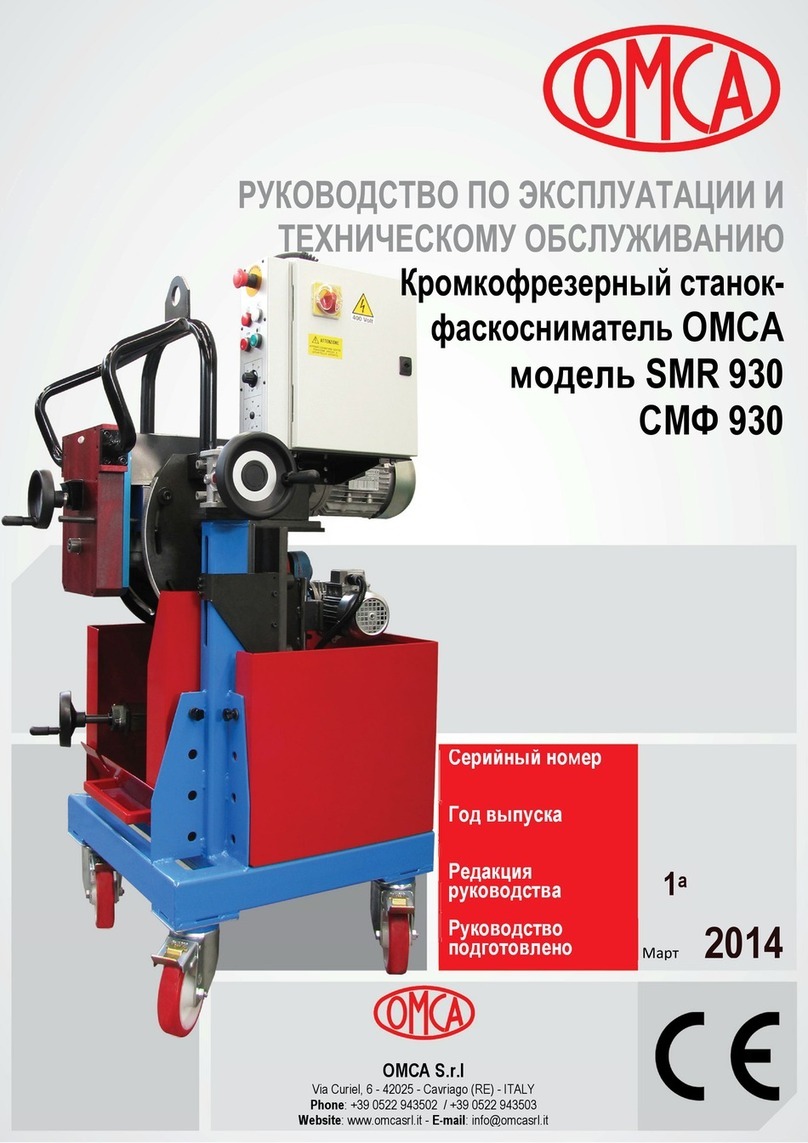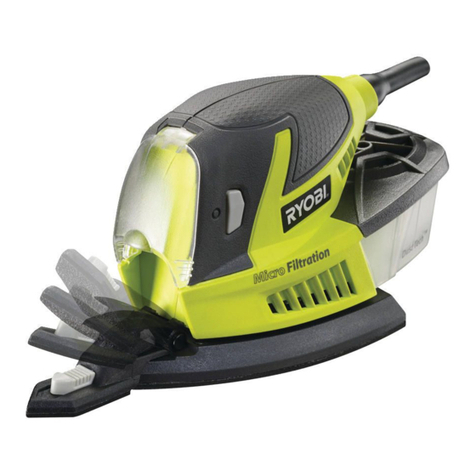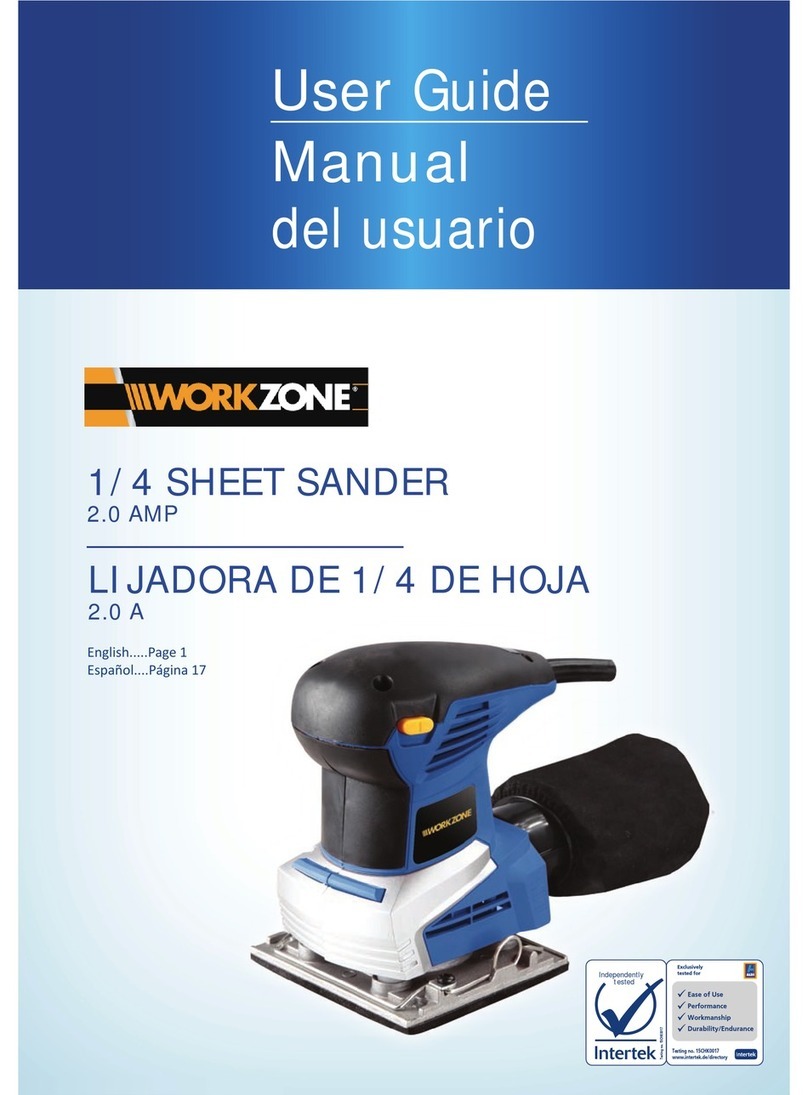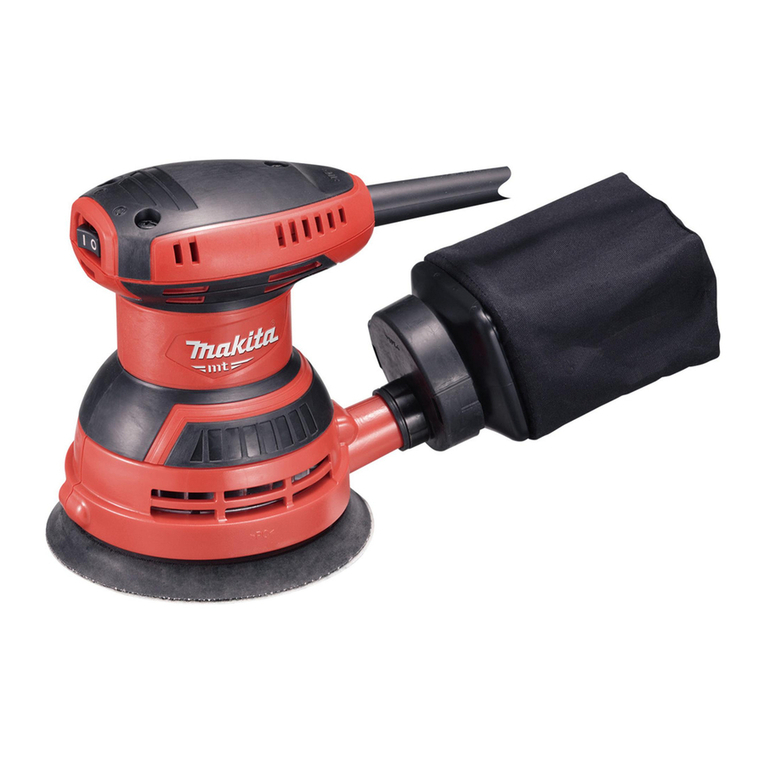
2Eastwood Technical Assistance: 800.544.5118 >> techelp@eastwood.com To order parts and supplies: 800.345.1178 >> eastwood.com 3
SPECIFICATIONS
• Sanding Board actual dimensions: 2-3/4" x 15-3/4"
• Accepts 2-3/4" x 17-1/2" Dry-Backed Longboard Sanding Strips or 2-3/4" x 16-1/2" PSA
(pressure sensitive adhesive) Backed strips.
• Strokes per minute: 2,100.
• Air Consumption: 5 cfm [180 lm.].
• Inlet thread size: 1/4" FNPT.
• Variable speed, 2 cylinder, double ended air motor & double rack and pinion drive.
• High-density foam facing on sanding board surface with positive abrasive paper retaining clips
SET UP & CONNECTION
• Be sure that the air supply to the tool is clean and dry. Moisture in the supply line will quickly
damage the motor and valves.
• A minimum 3/8" I.D. air line should be used for optimal performance.
OPERATION
• Disconnect air supply from the tool to prevent accidental starting and potential injury while
installing or removing Abrasive paper strips.
• To attach dry backed strips, release over-centered, heavy wire spring-clips located at both
ends of the longboard.
• Place 1/4" to 3/8" of the end of the strip under the front retaining clip then lower and secure
spring-clip in place. While removing looseness in the abrasive strip, fold rear end over end of
longboard then under rear retaining clip. Lower the rear spring-clip.
• PSA (pressure sensitive adhesive) strips may be applied directly onto the thoroughly clean and
dust free, high-density foam longboard facing pad.
• Reconnect air supply; depress the throttle to begin sanding action. Speed is regulated by
pressure applied to the trigger. Note: Always use two hands to operate the sander. One on the
rear trigger handle and the other on the auxiliary front mounted knob.
Your Eastwood Straight-Line Sander is a heavy-duty professional quality tool ruggedly designed for
many years of reliable service. It features a high-efficiency; double-ended, 2 cylinder motor with
a positive, double rack and pinion drive assembly for smooth operation and long life. Speed is easily
controlled with an infinitely progressive throttled speed control.
SAFETY INFORMATION
In this manual, on the labeling, and all other information provided with this product:
WARNING indicates a hazardous situation which, if not avoided, will result in death or serious injury.
READ INSTRUCTIONS
Thoroughly read and understand this manual before using this tool.
Save for future reference.
HEALTH & INJURY HAZARDS
• Exposure to the loud noise of this tool can cause hearing loss. Wear hearing
protection when using this tool.
• Dust created by grinding, sanding and wire wheeling can contain hazardous
materials. Wear a NIOSH approved respirator.
• This tool vibrates during use. Long-term exposure to vibrating machinery
can cause temporary or permanent injury to the hands, arms and
shoulders. Do not use this tool for extended periods of time. Wear suitable
gloves to reduce the effects of the vibration.
• This tool can emit sparks and flying debris when operating. Always wear
ANSI-approved goggles when using this tool. Bystanders must wear
personal protective equipment if in the work area.
• This tool can cause serious cuts and brush burns. Keep hands and body
away from sanding area when using this tool. Wear thick, well fitting gloves
to prevent cuts and brush burns.
• Disconnect the tool from the air supply before changing sandpaper,
making adjustments, or storing the tool. This will prevent injuries from the
accidental starting of the tool.
• Do not force the tool to make it operate more quickly. If tool does not
remove material acceptably, install a new sheet of sandpaper or try a
different grade of paper.
• Secure work piece with clamps or other means before sanding. Do not hold
the work against your body or in your hands as this is unstable and could
lead to injury.
• Do not put the tool down until it has come to a complete stop.
• This tool can kick back toward the operator. Use care when working on
corners or edges.
BURSTING HAZARDS
• Never connect to an air source capable of exceeding 200 psi. Excessive air
pressure can cause the unit to burst causing personal injury and damage.
• Never use any bottled gas as an air source for this tool. Some of these
gasses are capable of explosion or are bottled at pressures high enough to
burst this tool.















